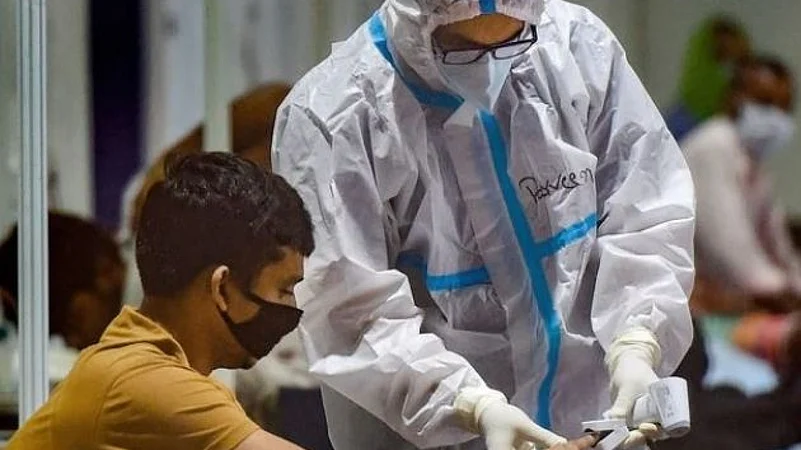Despite being the first state to achieve 100 per cent vaccination, braving all geographical and climatic hardships, Himachal Pradesh's hill stations and isolated high-altitude and snow-bound valleys are witnessing a surge in Omicron cases.
As many as 70 deaths in the past 11 days,11,441 active cases and almost thrice this number of unreported cases has created an alarming situation. The state has a 62.72 lakh fully vaccinated population.
The spread of the infection is pretty rapid, although symptoms in the majority of the cases are ‘mild’ barring the persons with comorbidities.
Dr Jagdeep Thakur, a professor in the ENT department of Indira Gandhi Medical College (IGMC), Shimla claims that almost every third family, including in Shimla—the capital, is in the grip of the new variant. The people are not reporting to doctors or else avoid testing, and resorting to home remedies in due course.
Advertisement
The state’s four districts viz Kangra, Shimla, Sirmaur and Hamirpur contribute almost 60 to 65 per cent of the total caseload even as high-altitude villages in Kinnaur and Lahaul-Spiti, under freezing sub-zero conductions, are in the grip of the new variant.
The positivity rate is still on a higher side at 20 per cent.
“We are keeping a close eye on the situation as this could go either way—downwards or upwards. We are prepared for higher sides and have set up control rooms to sub-divisional levels for prompt action," special secretary (Health) Hemraj Bhairva told Outlook.
Medical professionals attribute the surge in remote and high-altitude areas to the closed-door living of joint family houses during winter months and snowfalls. The houses are small and people reside together, eat in common rooms or live near the heating space.
Advertisement
“There are higher chances of catching respiratory infections easily from own family members or visitors. The positive thing being noticed in the third wave is that most people are vaccinated and there is a lot of awareness about medicines and home remedies” Dr Jagdeep Thakur informs.
The admission rate in the hospital is just below 2 per cent which hasn’t created any crisis situation in the state.
The projection of the health department, as per the latest data, shows that there will be 50,000 active cases over the next two weeks. The government has notified Shimla’s Deen Dayal Upadhyaya(DDU) hospital as a dedicated Covid hospital to meet emergencies.
Children have so far been able to evade the worst effects of Covid-19 but among 55 reported deaths, there were four children. Thus, health officials have circulated new guidelines for hospitals to handle asymptomatic and symptomatic cases. The educational institutions in the state have already been closed after several boarding schools and colleges reported a higher number of students being tested positive.
“It is common knowledge that the winter season, especially in the higher latitudes, is the most difficult part of the year for patients with chronic respiratory diseases. The inhalation of cold air has negative effects on the lungs with respiratory diseases and in particular on asthma patients. The Omicron infection is a new dimension this time,” says Dr R S Minhas, an ENT specialist.
Advertisement
Chief Minister Jai Ram Thakur has ruled out the importation of fresh curbs. The number of deaths happening is a worry though daily cases have dropped a bit in the past four-five days.
"The focus of the government right now is to prevent the spread of infection and then dedicated health care for patients under home isolation. More than 40,000 home isolation kits have been prepared for free distribution to patients. These are basically immunity boosters and some mild medicines," he says.




















